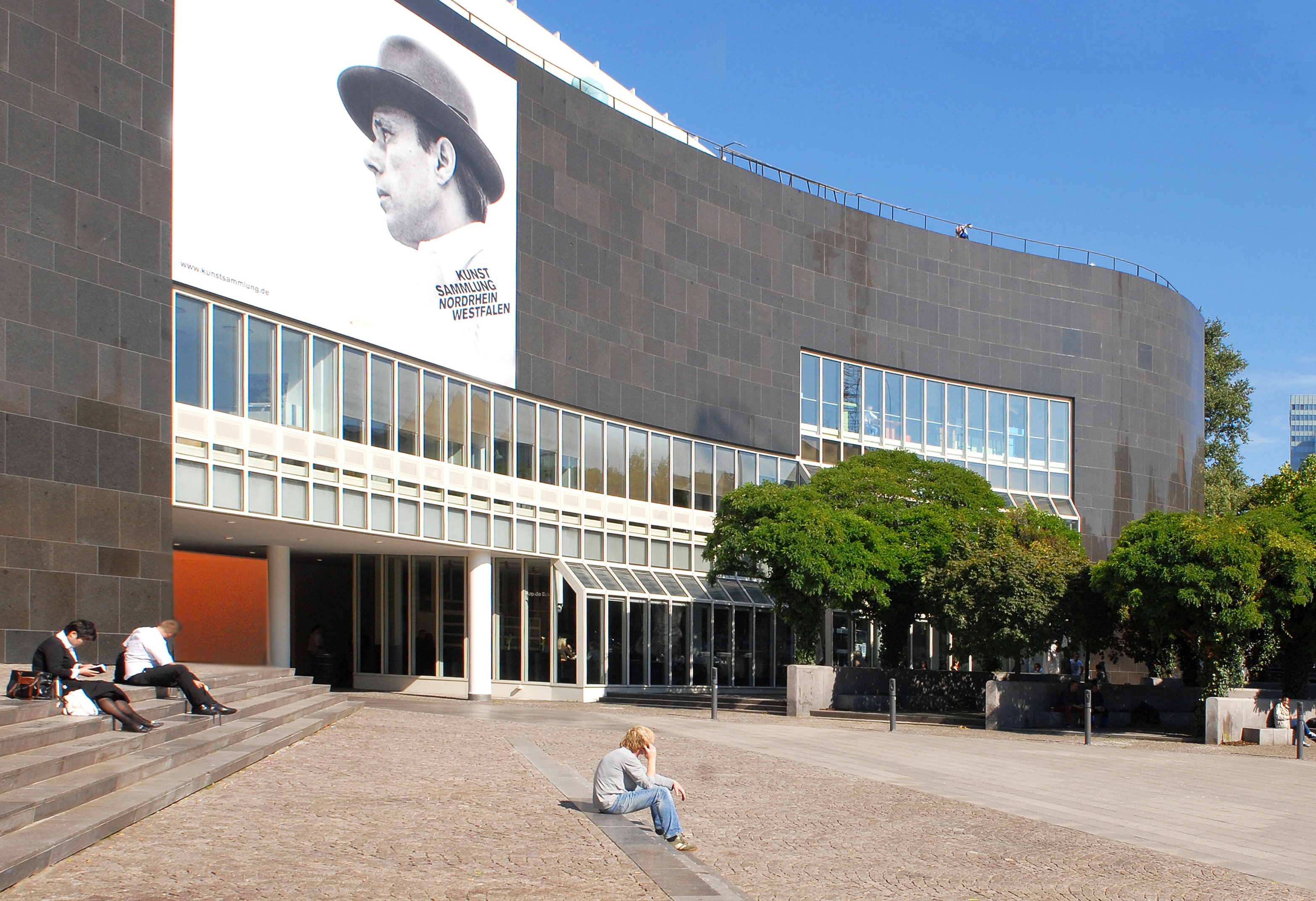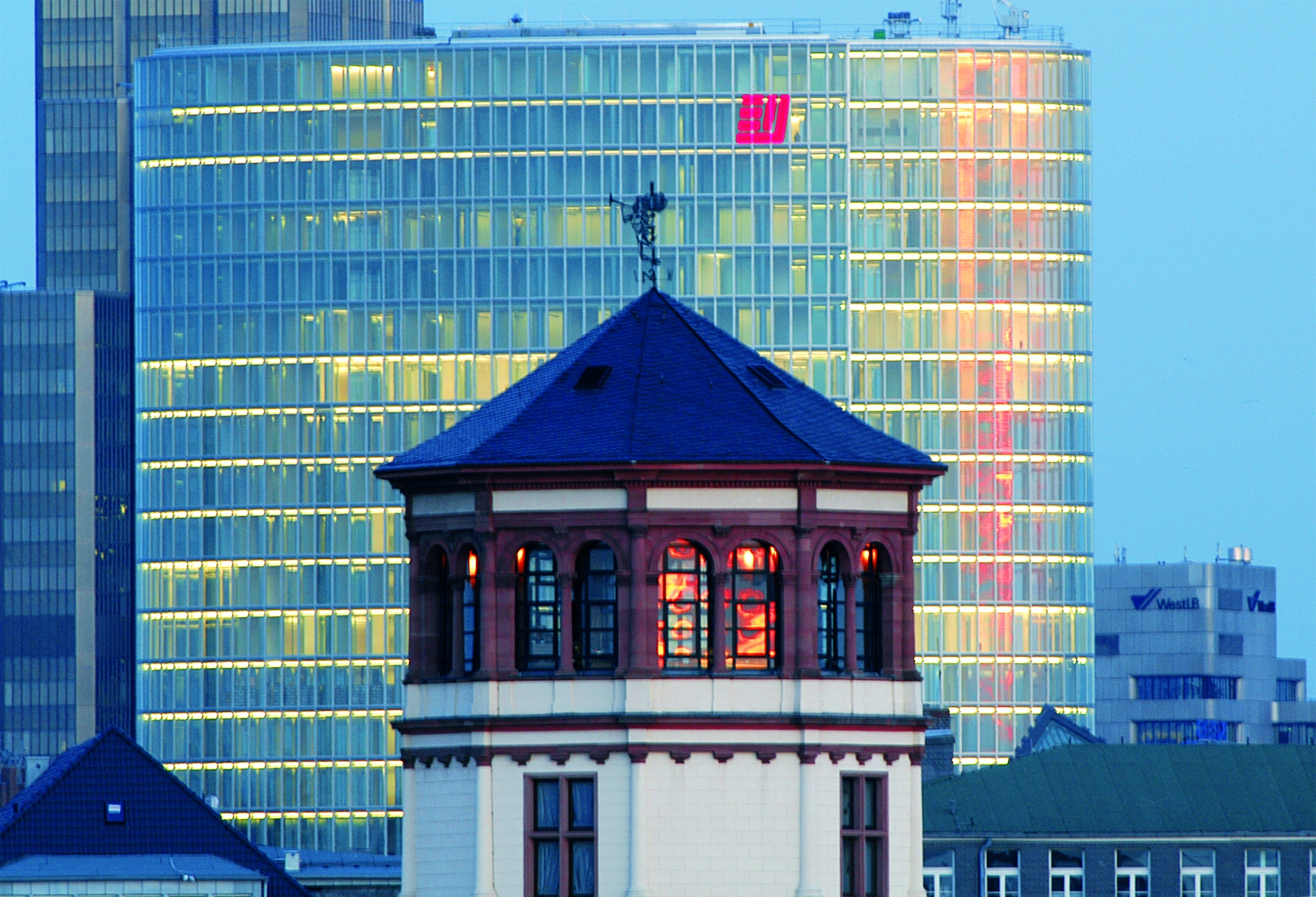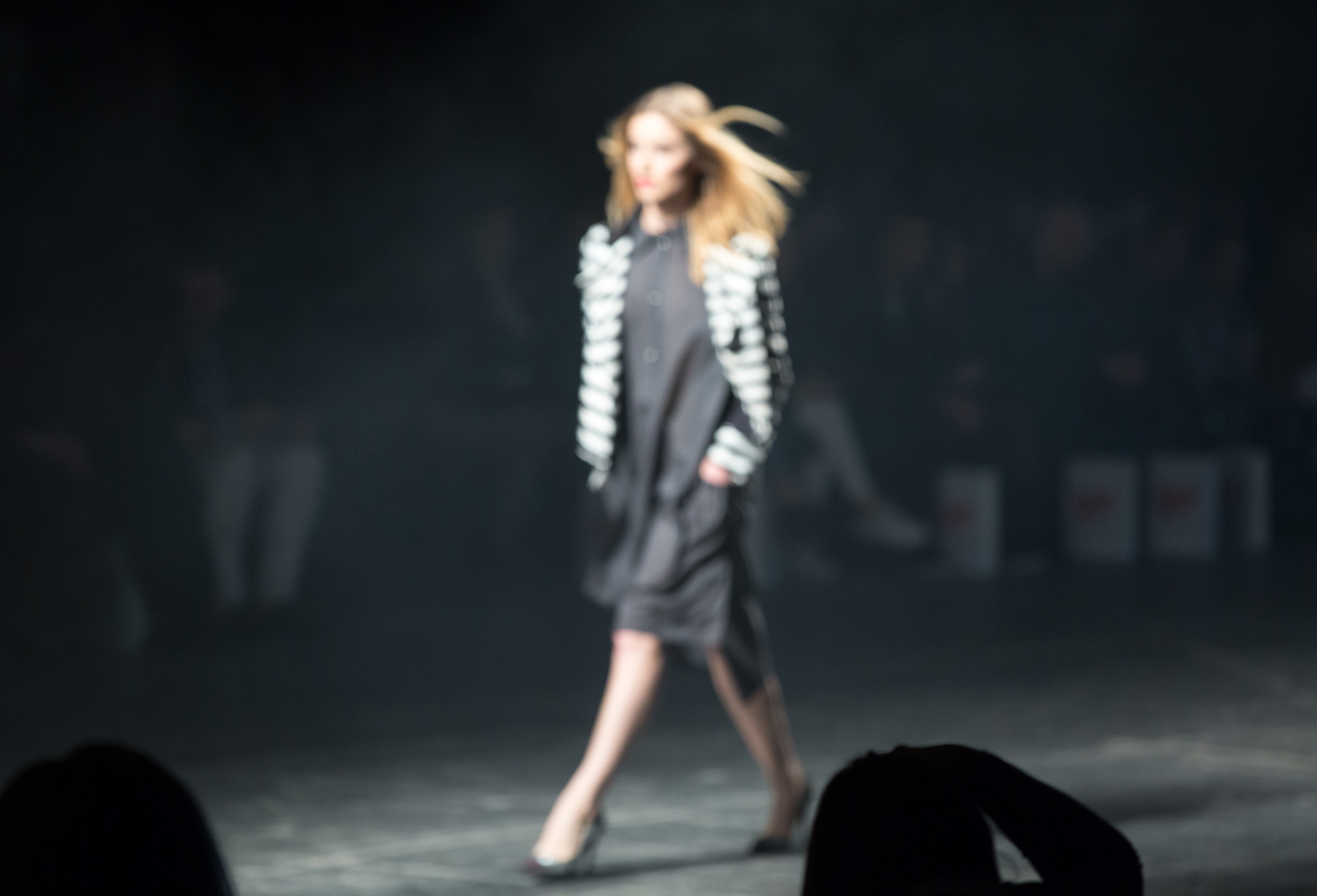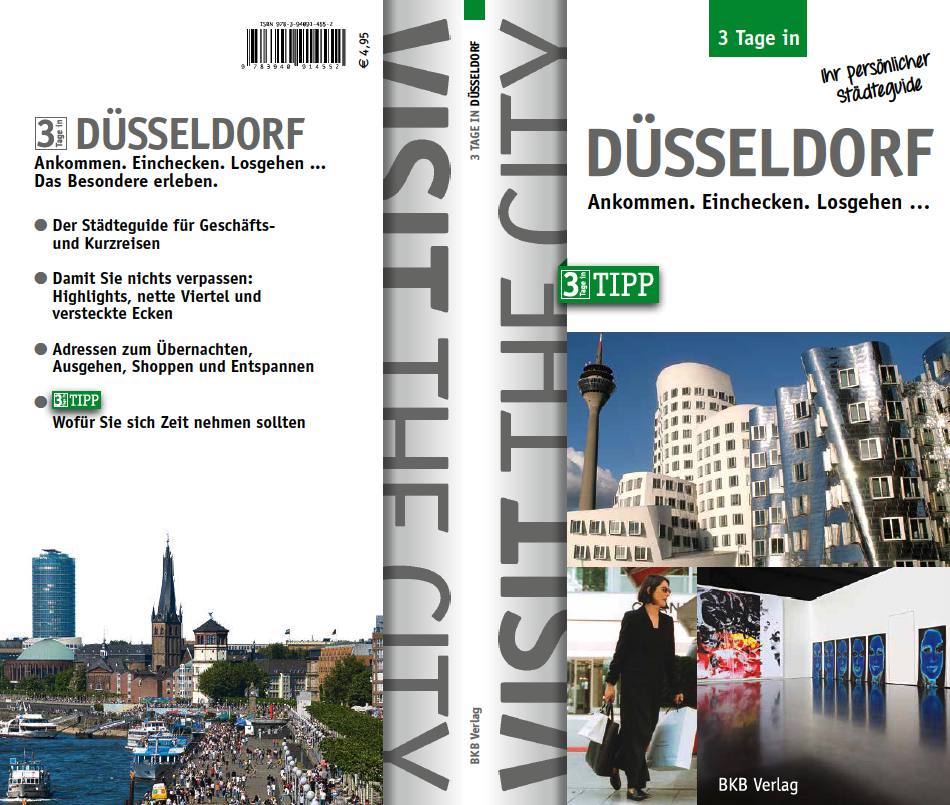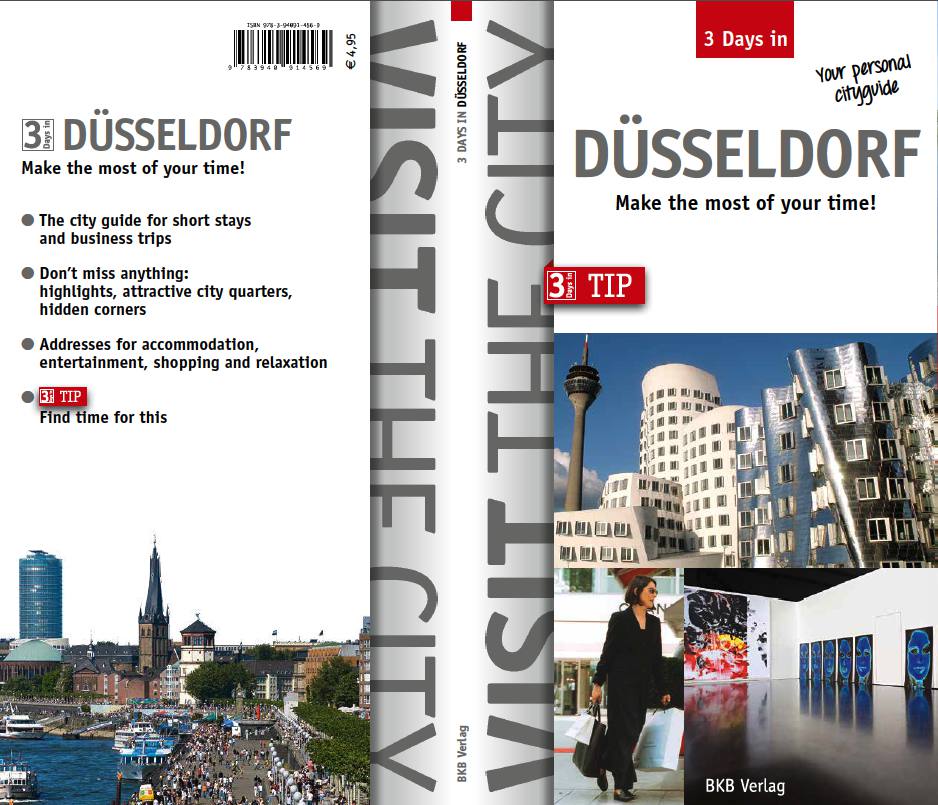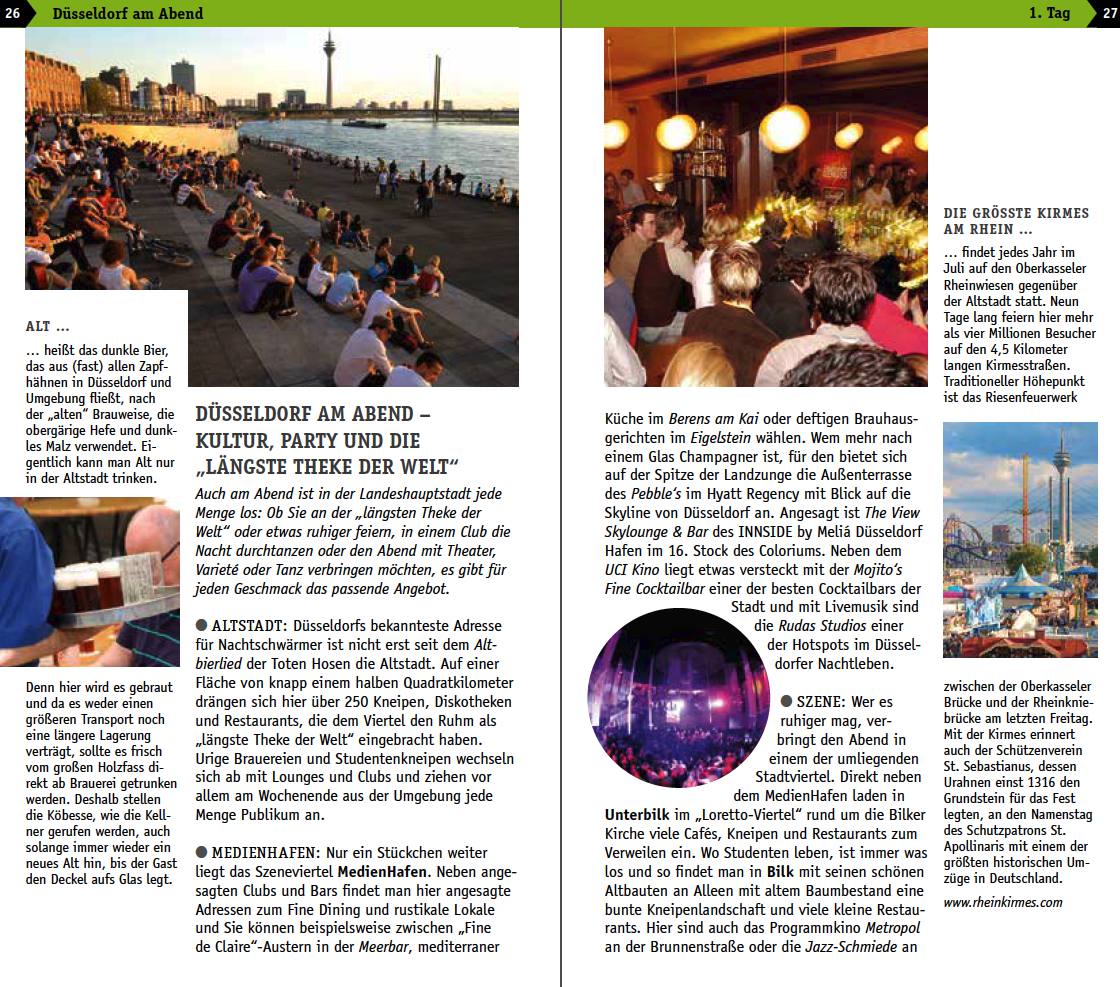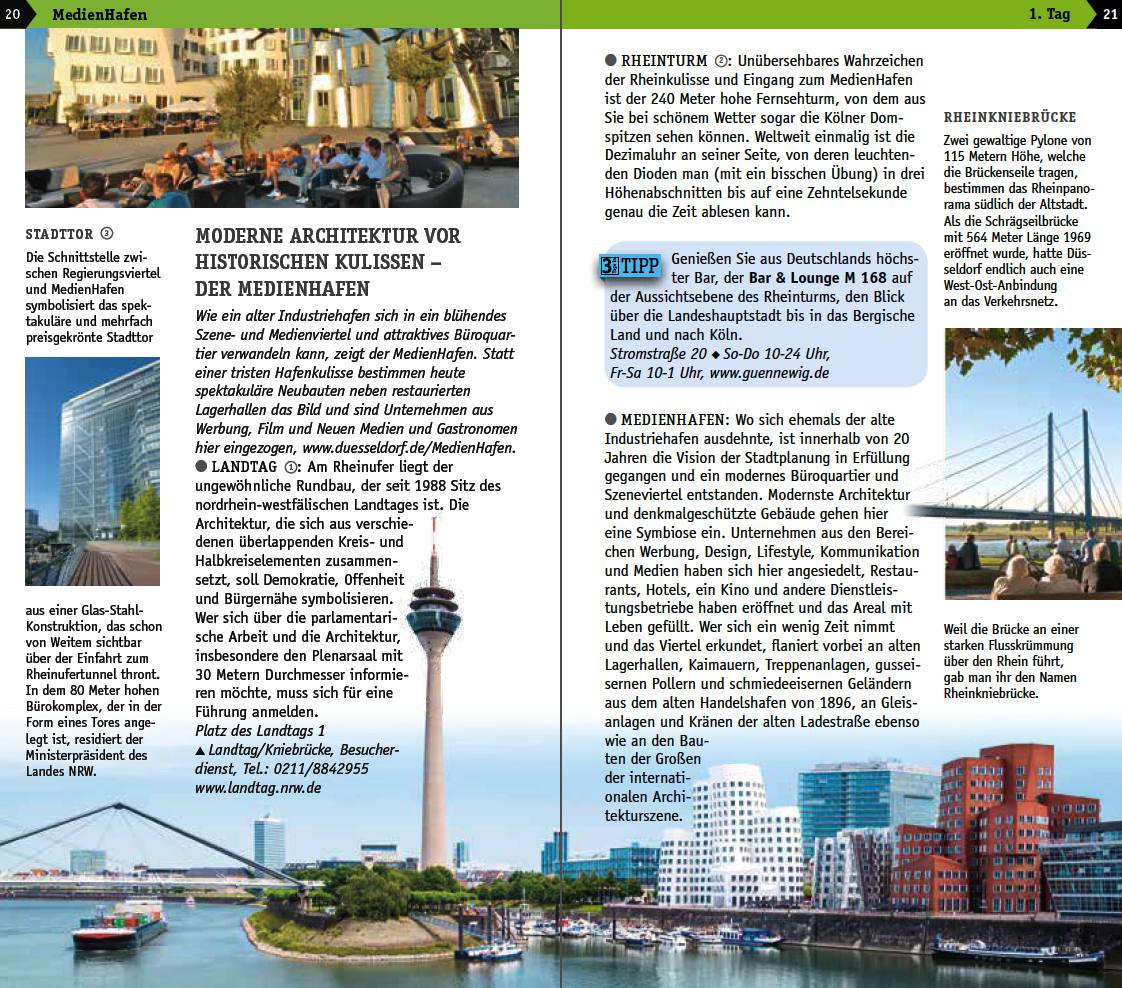DUESSELDORF – FASHION, MEDIA & FINE ARTS
THE BKB TRAVEL GUIDE DUESSELDORF
You will find more detailed information in our travel guide “3 Days in Duesseldorf“: A schedule for three days, a city map, special tips and the BKB address service. We will show you the highlights, walk with you into nice quarters, have a break and tell nice stories … just as much as you need for three days!
Order the travel book “3 Days in Duesseldorf” as paperback or e-book right here in the BKB Shop or in your bookstore!
TIPS FROM THE EDITORS FOR YOUR 3-DAYS TRIP TO DUESSELDORF
For some people is Duesseldorf “Little Paris”, for others it‘s “Tokyo on the Rhine”, and for others still it’s the “Capital of Advertising”. Duesseldorf is a city with many different faces – in the worlds of fashion, art, advertising, and business – that have come together to form a unique mixture. Duesseldorf’s diversity is reflected in everyday life. “Live and let live” is the motto of this Rhine metropolis. Immerse yourself in this “multi-coloured world” on the Rhine and be infected by Rhenish vitality and joie de vivre – an attitude of life that not only marks the Carnival season, but can be experienced the whole year through.
The texts and images on our website are to help you get your bearings and plan your trip to Düsseldorf. All information has been carefully researched by the 3-Days-in editorial team and continually updated. Nevertheless, it is possible that individual details are incomplete or out of date. We are therefore grateful for every correction or addition to our information. Please send your hints to: info@3-tage-in.de
DUESSELDORF DAY 1
A STROLL THROUGH THE OLD TOWN
From a busy market, this walk takes you through the Old Town to buildings that tell of the beginnings of the village on the river Düssel, famous rulers, Baroque churches and modern art! The starting point for the walk is Carlsplatz, which is surrounded by numerous pubs and restaurants. From Monday to Saturday the market on the square is absolutely worth a visit. Goods and produce from all parts of the world are on offer here and everything a gourmet could wish for is obtainable. Two museums invite you to a visit: The Hetjensmuseum in the historic Palais Nesselrode is one of the top addresses for ceramics. It presents ceramics from eight millennia. Cineasten’s favorite place is the Film Museum, a veritable temple of film history that illuminates all facets of this art form, telling posters, projectors, cameras, costumes and backdrops all about the history of film.
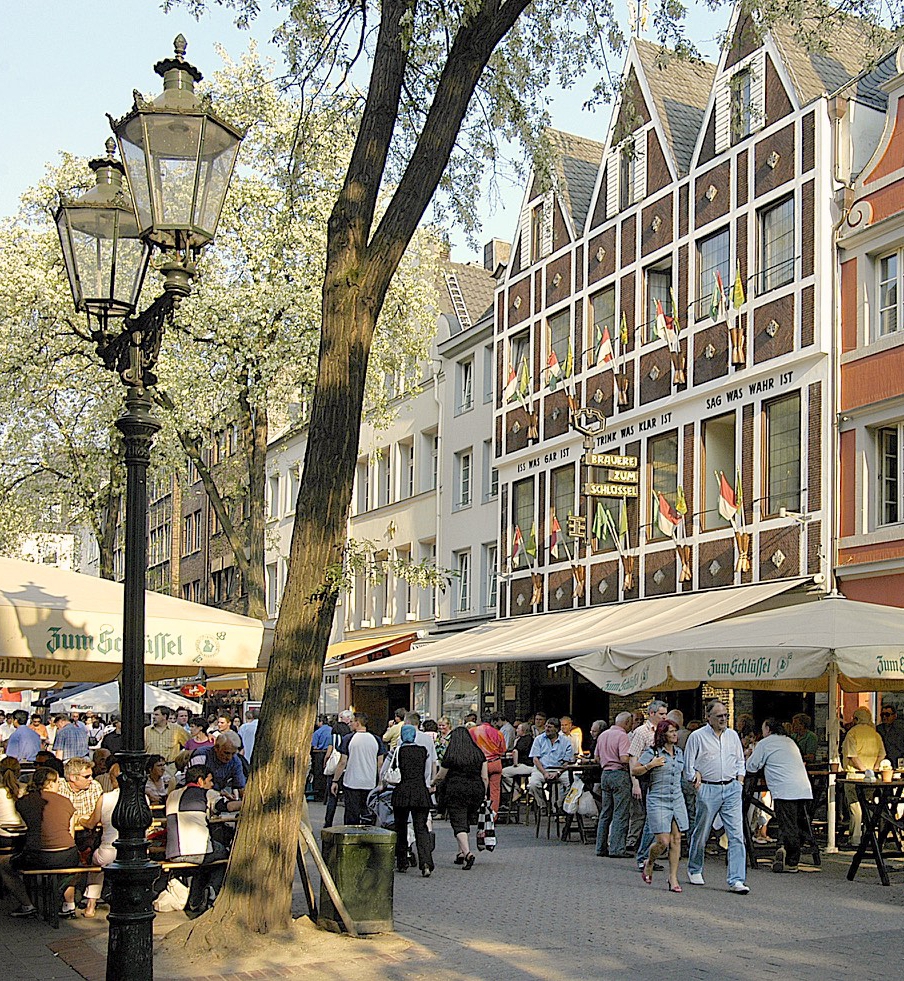
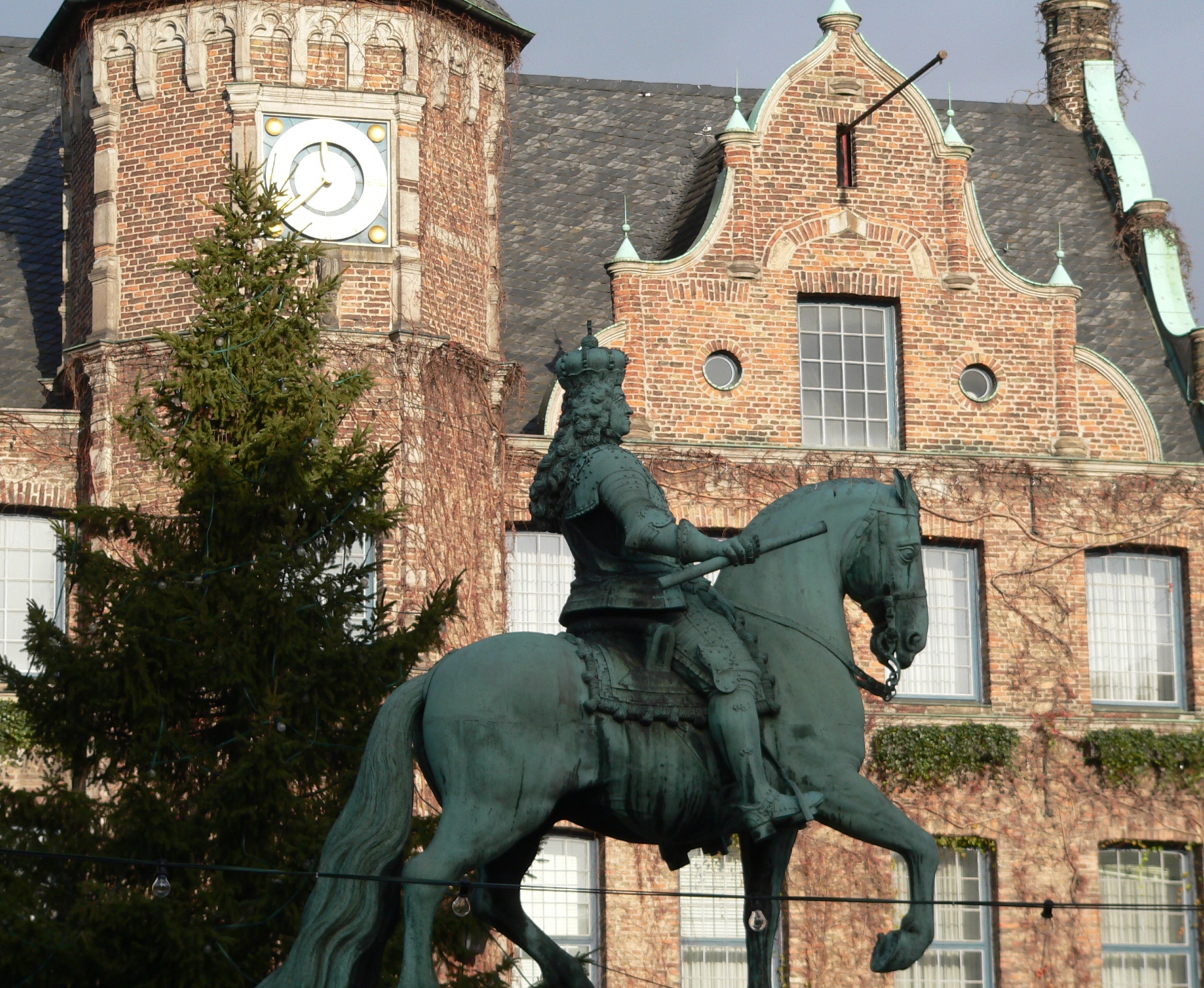
THE ELECTOR IN FRONT OF THE TOWN HALL
The eye-catcher in front of the City Hall is the statue of the Elector Johann Wilhelm II of Pfalz- Neuburg, who is simply known in Düsseldorf as Jan Wellem, riding a horse. His court sculptor Gabriel de Grupello created the work in 1711 – commissioned by the Elector, by the way, and not as a gift from the thankful citizens of Düsseldorf as the inscription maintains.
Have a break at the pub Uerige. The famous Altbier has been brewed there for more than 150 years. Ofcource the bear is the beer is fresh and you will drink it in good company.
WHERE EVERYONE MEETS
The landmark of the oldest part of the old town with beautifully restored residential buildings and cobblestone streets is St. Lambertus, the oldest church in the city with a leaning tower, the spire of which, according to folklore, the devil personally shot. Meeting point on the Rhine is the Burgplatz, where once stood the ducal castle. In the warmer months, especially the large outside staircase leading down to the Rhine is a popular place. In the midst of millions of splashes of color on the stairwells, which were designed by the Academy Professor Hermann-Josef Kuhna and his students, you can watch the boats on the Rhine, some street artists and just enjoy being among the other people.
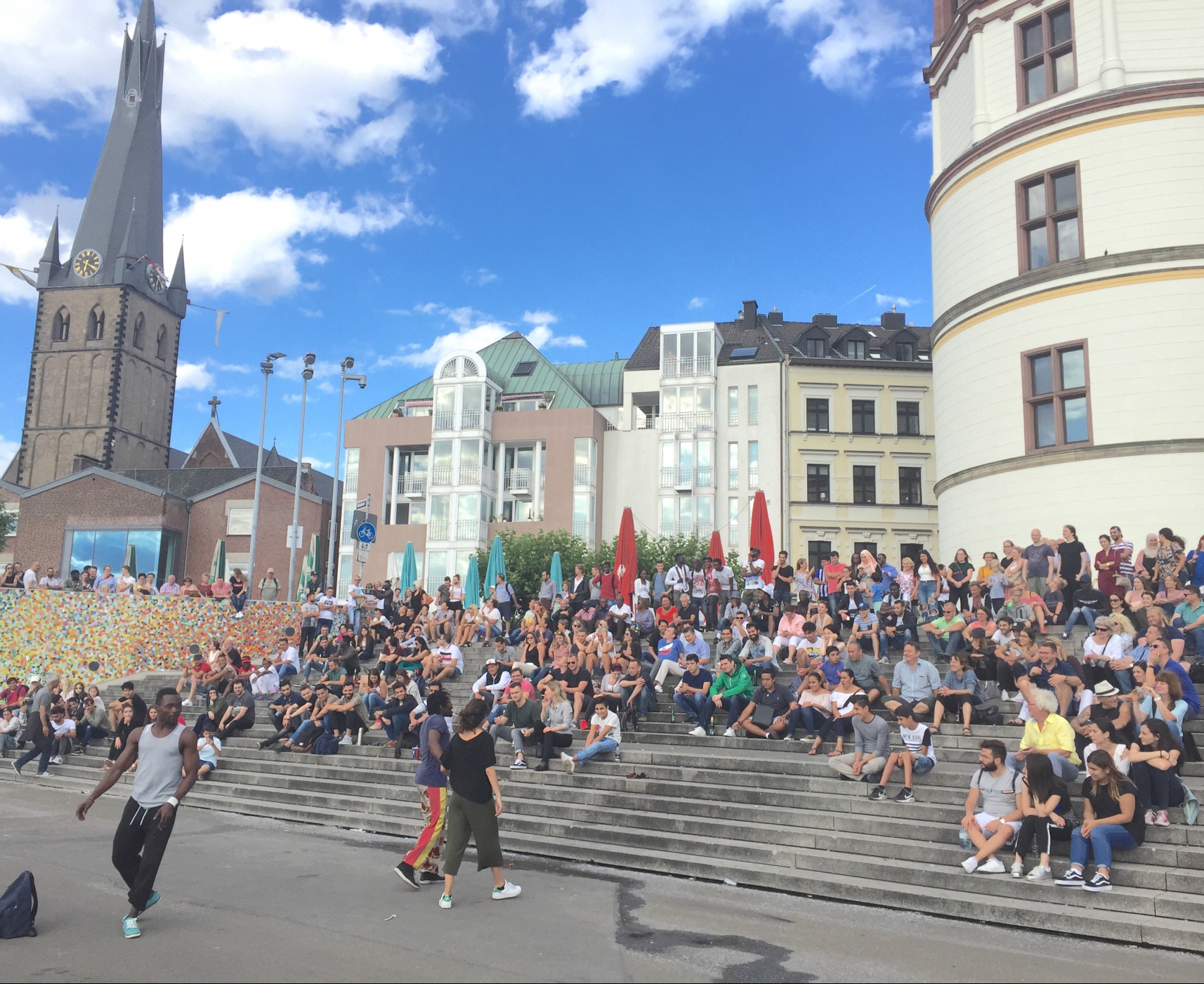

IN DUESSELDORF THE RHINE IS THE PLACE TO GO
Stroll along the Rhine-bank promenade towards the Landtag (regional parliament) and Media Habour. Passing Pegeluhr and KIT, the spectacular exhibition hall for contemporary art below the banks of the Rhine, you come to the former industrial port, where modern architecture and listed buildings enter into a genuine symbiosis. Companies from the fields of advertising, design, lifestyle, communication and media have settled there, restaurants, hotels, a cinema theatre and several other service providers have filled the area with vibrant life.The unmistakable landmark on the Rhine is the3 240-metre-high Rheinturm, which also marks the entrance to the Media Harbour. On a day with clear wether you can see the spires of Cologne Cathedral from its revolving restaurant.
THE MEDIA HARBOUR
The best-known buildings in the MedienHafen are the three inclined Gehry buildings designed by the American star architect Frank O. Gehry in the colours white, silver and red, which look like they have been made of modelling clay because nothing is linear about them. Other architectural highlights include the building at the Port Event Center called “Wolkenbügel” because of its boldly floating construction, the Maki solitaire, the cube-shaped office building designed by Japanese star architect Fumihiko Maki, the Colorium with its colorful facade, whose 2,200 window panes have been screen-printed, and the Roggendorf House, on which colorful plastic creatures climb up.
Don’t miss the view of Düsseldorf’s skyline from the outdoor terrace of the Pebble’s in the Hyatt Regency.
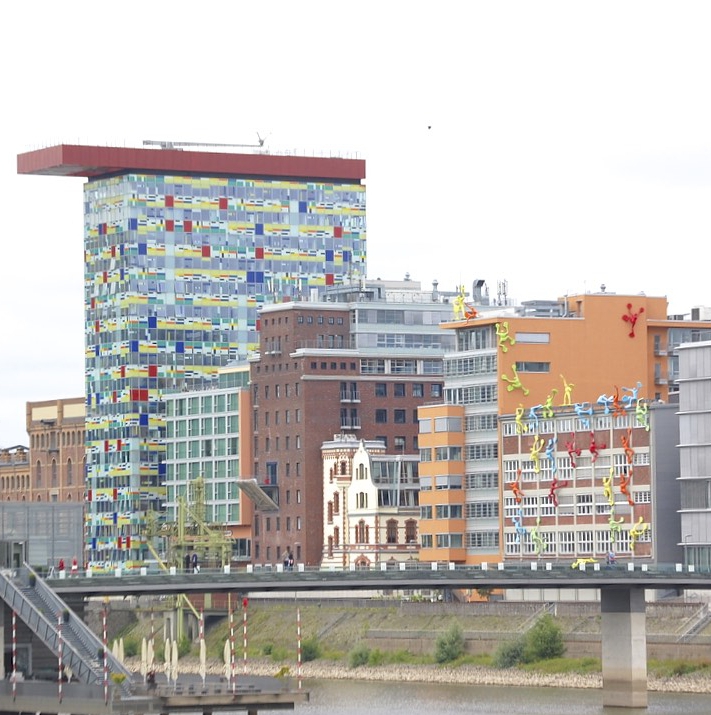
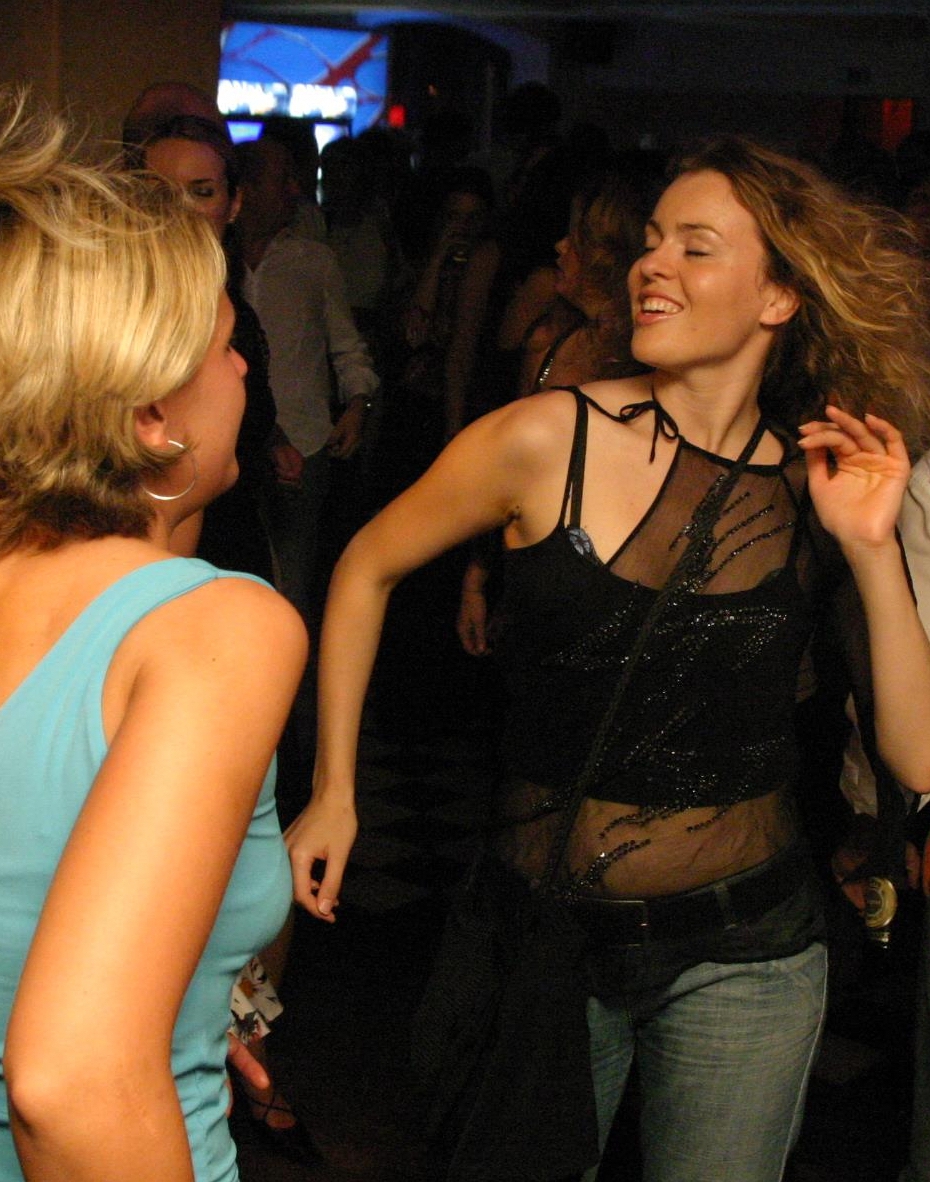
A NIGHT OUT
A night you have the choice: whether you want to celebrate at “the world’s longest bar” or in quieter surroundings, dance all night in a club or spend an evening in the theatre, a variety show or a dance performance, there is something to suit every taste. The Altstadt, Old Town, is Düsseldorf’s most popular area for going out in the evening. You find more than 250 pubs, discos and restaurants crowd on half a square kilometre. It is only a short walk from here to a trendy new quarter, the Media Habour, alongside fashionable clubs and bars, here you have a choice between fine dining and rustic eateries.
For a quieter time, spend the evening in one of the surrounding districts of the city. Right next to the Media Harbour in Unterbilk, the Loretto Quarter around the church of Bilk has numerous cafés, pubs and restaurants. Those who prefer to visit a concert or the theatre in the evening will find a varied offer in Düsseldorf.
If you like to spend an evening at the theatre or in a concert, you will find a diverse range of events in Düsseldorf.
With one of the world’s largest opera ensembles and a leading ballet company, the Deutsche Oper am Rhein is an outstanding venue for opera and dance.
DÜSSELDORF DAY 2
IN THE MORNING: A TRIP TO A FORMER IMPERIAL TOWN
An excursion to the north of Düsseldorf takes you to a place that includes an emperor, “Kaiser”, in its name. In the oldest district of the city, Kaiserswerth, you can stroll through the picturesque centre with an old marketplace and Baroque buildings dating from the 17th and 18th centuries. You can visit impressive ruins of an imperial castle and enjoy a view of the Rhine beneath great old trees.
You will visit the imposing ruins of the imperial palace (Kaiserpfalz) directly on the banks of the Rhine, which despite its destruction in the War of the Spanish Succession still gives an idea of the once gigantic complex built by Friedrich Barbarossa in 1174 – 1184.
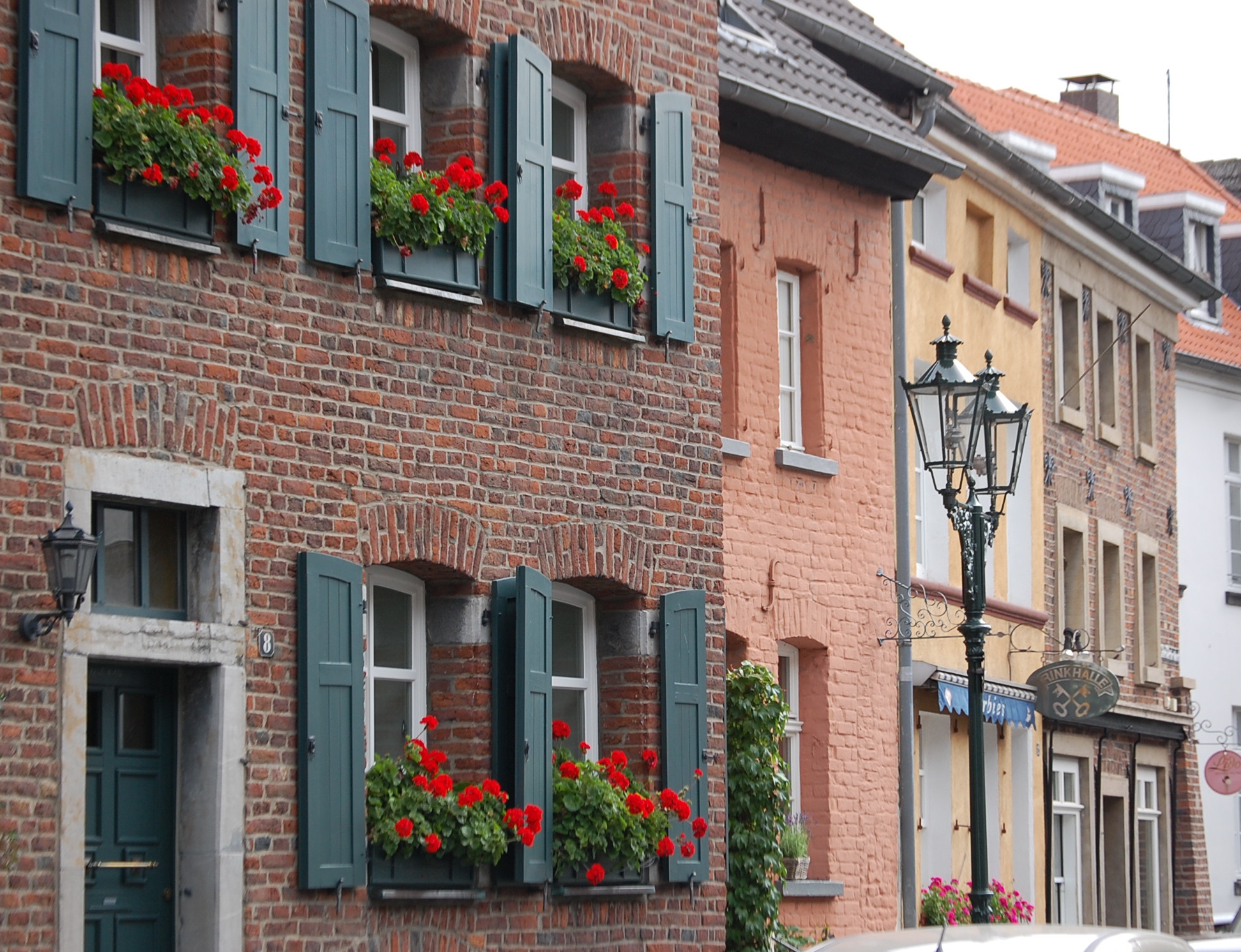
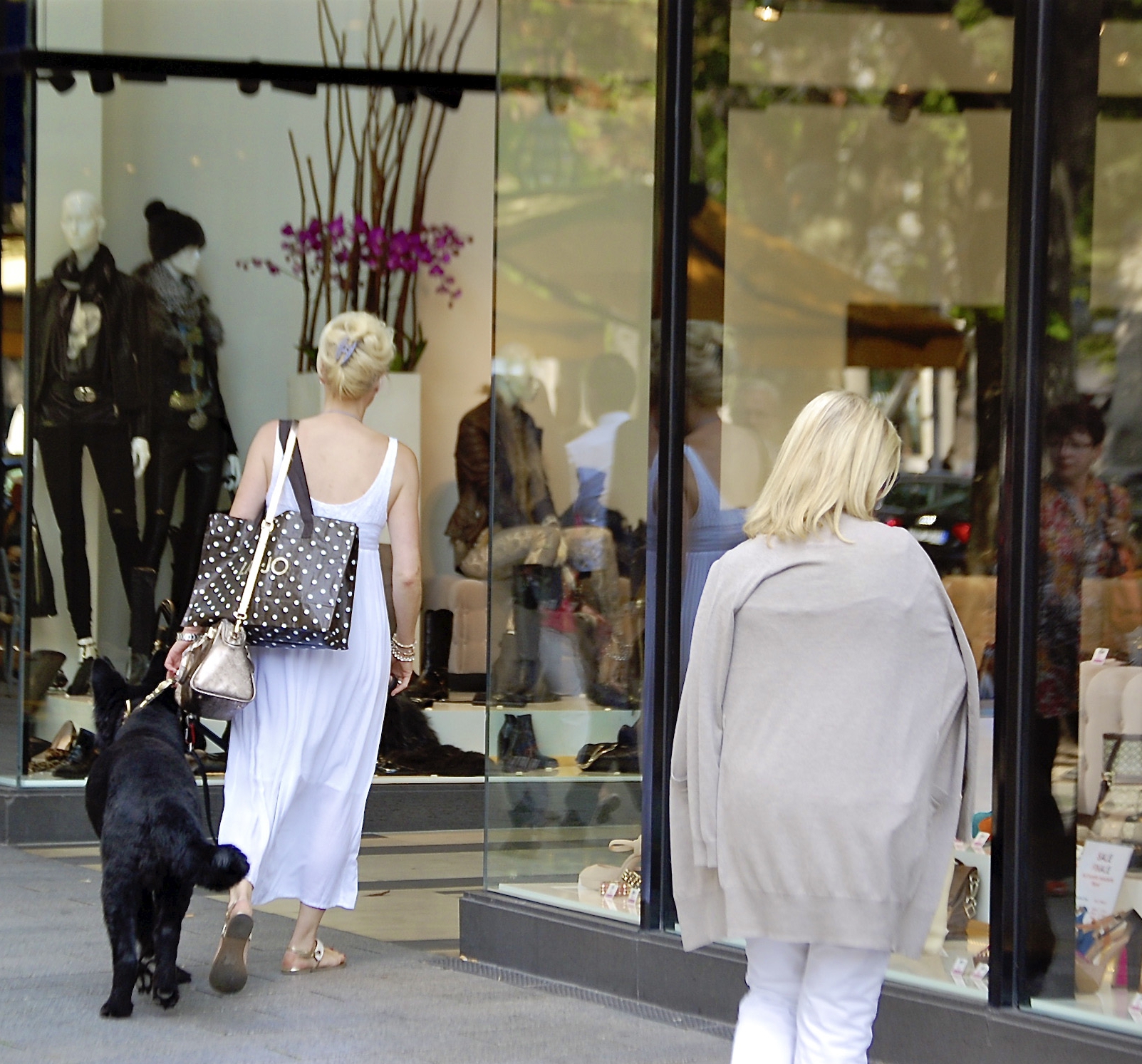
IN THE AFTERNOON: SEE AND BE SEEN…
… is the motto on the Kö. This luxurious shopping boulevard is an emblem of the city and also one of the most expensive shopping streets in Germany. On its east side, exclusive stores mix with street cafes and other places to eat and drink, and the fashion-conscious find all the brands that matter in the world of design. Its striking end-point is the Kö-Bogen with its curved facade designed by the New York architect Daniel Libeskind. In 2014 it received the MIPIM Award for the world’s best urban renewal project. In addition to the fashion and lifestyle company Breuninger, flagship stores and top international brands have moved in.
…AND THAN SHOPPING
Schadowstrasse borders directly on the Königsallee and just like the typical pedestrian zones – leaves nothing to be desired in the way of fashion houses, department stores, and branches of international chains. The architectural highlight is the building with gigantically arched windows, which the American architect Richard Meier designed for the fashion house Peek & Cloppenburg.
Have a break at the Bazar Café in Wilhelm-Marx-Haus, Europe’s first office tower dating from 1924.
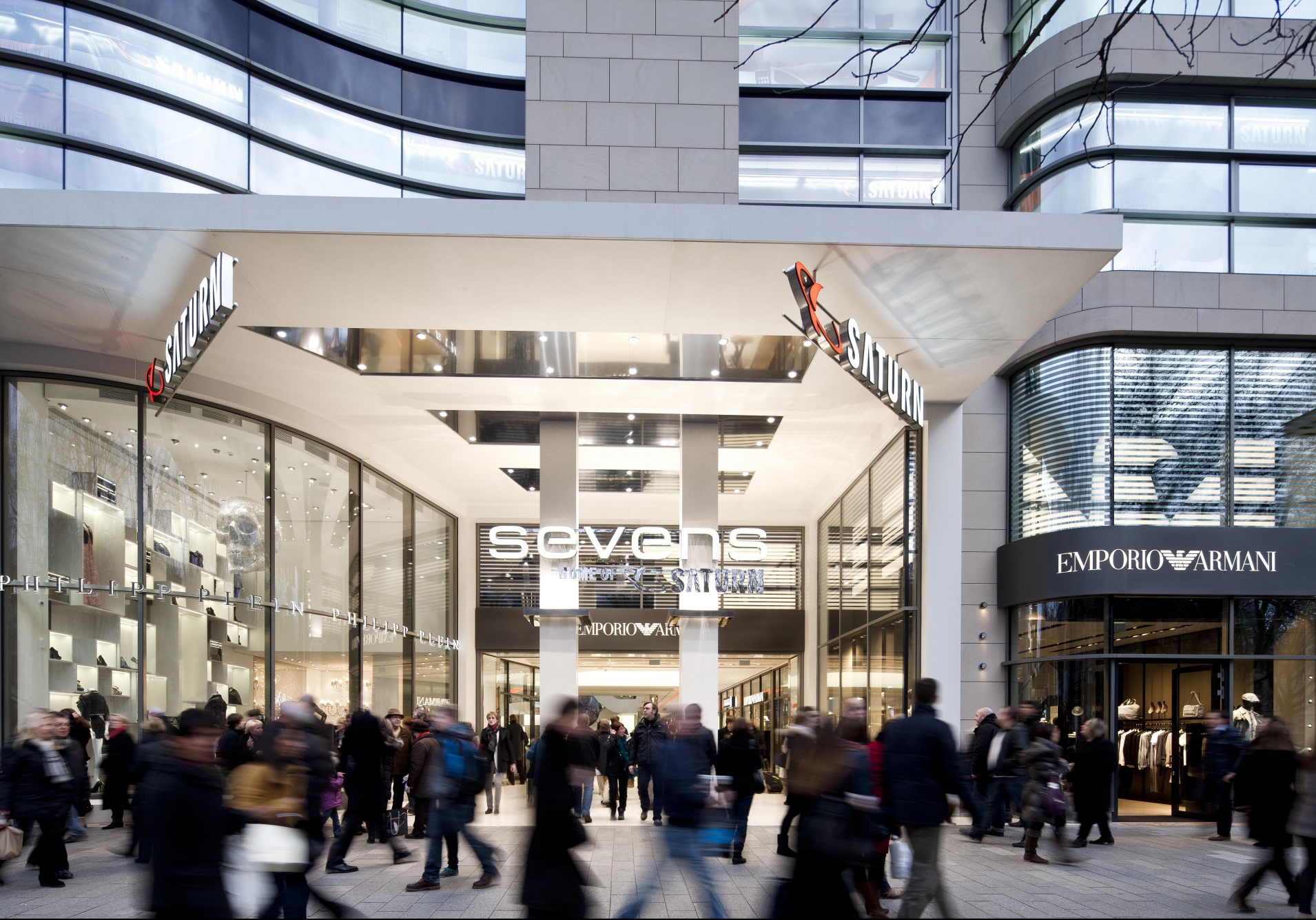
DÜSSELDORF DAY 3
IN THE MORNING A BAROQUE GEM …
The trip to the south of the city leads to one of the architectural highlights of the Rhineland and lets you experience the full glory of an allembracing work of Baroque art! ! Those who’d like to see where the upper classes staged their hunting par- ties in the 18th century are at the right address. No other architectural monu- ment from this epoch is so well preserved, which is why the elaborately restored ensemble of palace and park is regarded as a jewel of European architectural history. Elector Carl Theodor from the Palatinate commis- sioned the sumptuous building with large park grounds from his court architect Nicolas de Pigage in 1755 as a “Maison de Plaisance” or pleasure palace. Up until 1771, a unique total work of art was created in the late-Baroque style, one that unifies architecture, sculpture, painting, the decorative arts and landscape gardening within an overriding design conception.
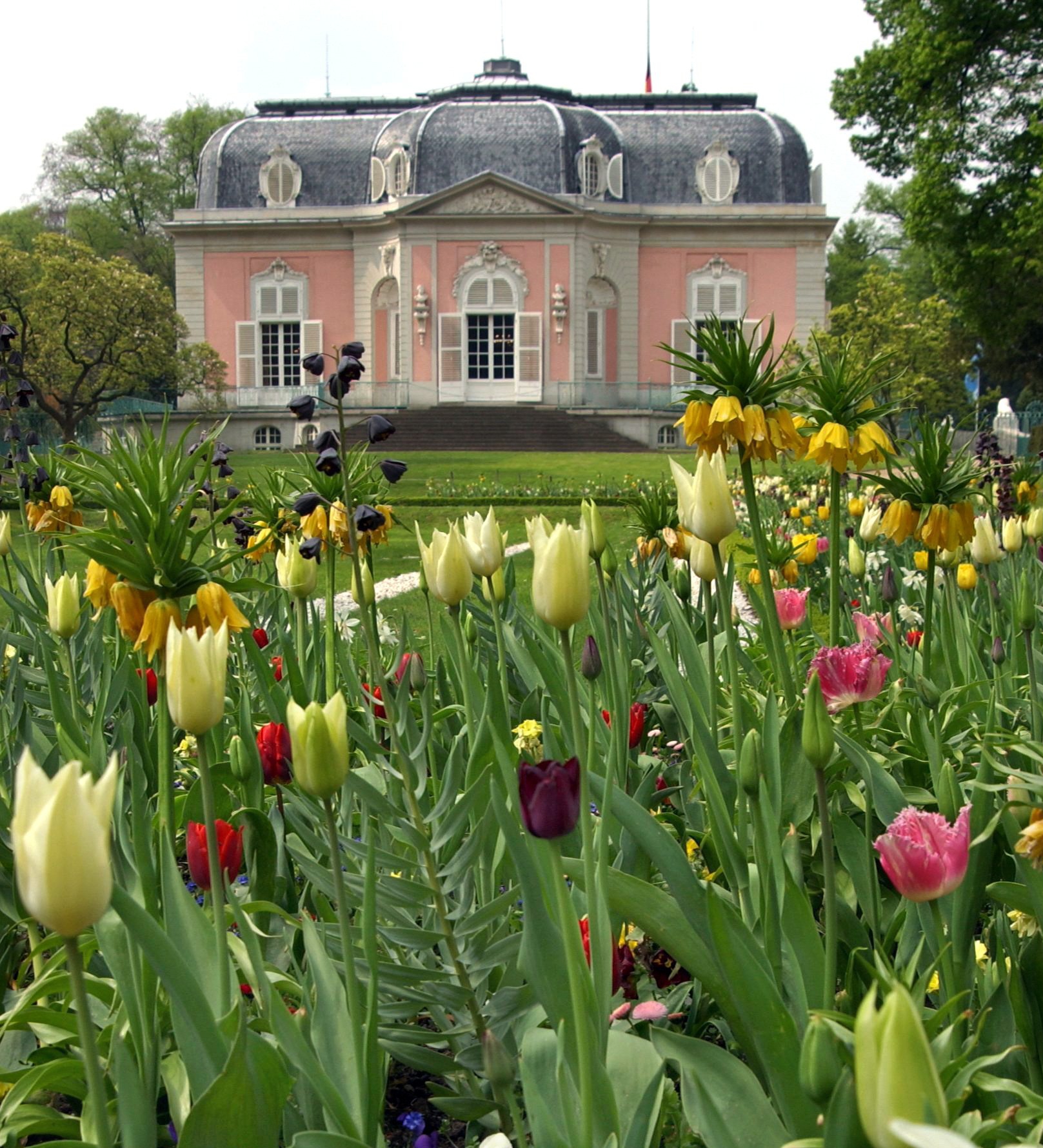
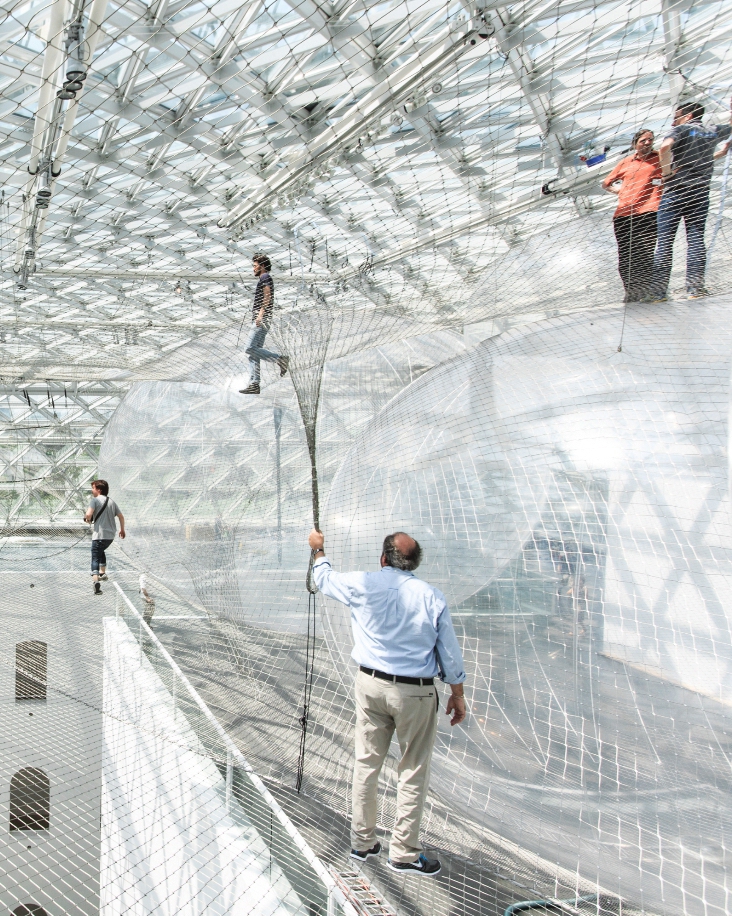
… IN THE AFTERNOON MEETING WITH PICASSO AND BEUYS
The theme of this walk13is icons of art: modern art in K20 on Grabbeplatz1a4 nd international contemporary art in K21 at the Ständehaus. Even when one of the more successful special exhibitions is not currently running, the black granite building from the 1980s attracts streams of visitors as if by magic. This is because of a noted collection in the daylight gallery with its bright, expansive display rooms that enjoys a high reputation in the international museum world.Fauvism, Expressionism or Cubism, Dadaism, Surrealism or Bauhaus – all the directions and their artists who radically broke with traditional image conceptions at the turn of the last century are represented.
The continuation of this programme can be found in the spectacularly renovated historic ambience of the Ständehaus, where K21 presents international contemporary art through collections and special exhibitions on 5,300 square metres under a glass domed roof.
FINALY THE SPECTACULAR K21
Where the North Rhine-Westphalia state parliament used to debate after the Second World War, K21 today presents contemporary art over 5,300 square metres in the spectacularly converted historic at- mosphere of the Ständehaus. As a continuation of the programme in K20, so to speak, the museum has set itself the task of representing the art of the dawning of a new age in its collection and special exhibitions. Within this compass, older works that point to modern developments have their place just as much as contemporary innovations. Room-filling installations and artists’ spaces are part of the special charm of K21 – for example Reinhard Mucha’s monumental installation Deutschlandgerät, created in the year of German reunification for the German pavilion at the 44th Biennale in Venice, or Juan Muñoz’ Conversation Pieces, which displays 27 identical figures en- gaged in lively communication.



